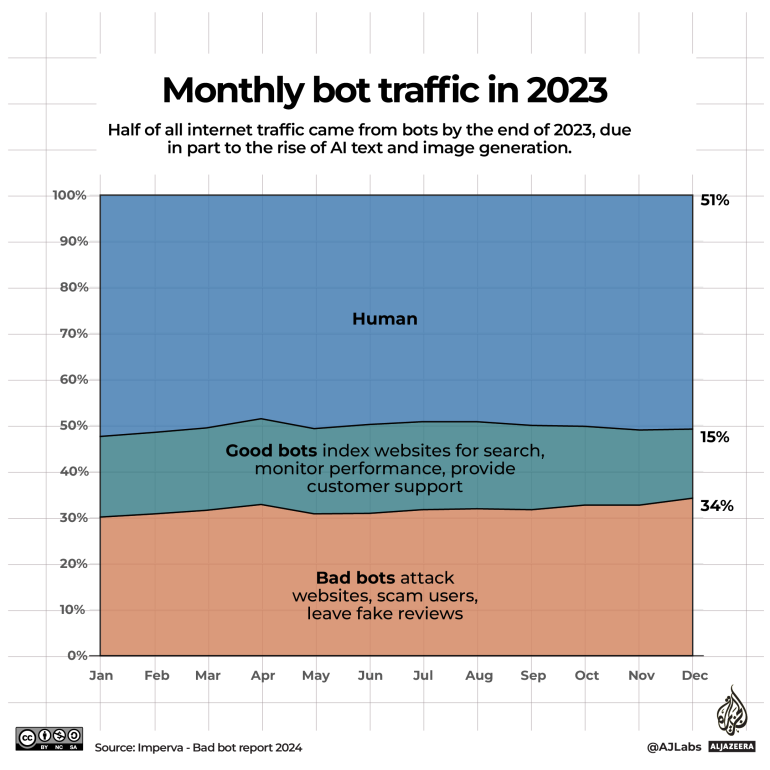By the end of 2023, nearly half of all internet traffic was bots, found a study by United States cybersecurity company Imperva.
Bad bots reached their highest levels recorded by Imperva, making up 34 percent of internet traffic, while good bots made up the remaining 15 percent.
This was partly due to the increasing popularity of artificial intelligence (AI) for generating text and images.
According to Baydoun, the pro-Israeli bots they found mainly aim to sow doubt and confusion about a pro-Palestinian narrative rather than to make social media users trust them instead.
Bot armies – thousands to millions of malicious bots – are used in large-scale disinformation campaigns to sway public opinion.
As bots become more advanced, it is harder to tell the difference between bot and human content.
“The ability of AI to create these larger bot networks … has a massively deleterious effect on truthful communication, but also freedom of expression because they have the ability to drown out human voices,” said Jillian York, director for International Freedom of Expression at international non-profit digital rights group Electronic Frontier Foundation.
Bot evolution
Early bots were very simple, operating in accordance with predefined rules rather than employing the sophisticated AI techniques used today.
Beginning in the early to mid-2000s, as social networks like MySpace and Facebook rose, social media bots became popular because they could automate tasks like quickly adding “friends”, creating user accounts and automating posts.
Those early bots had limited language processing capabilities – only understanding and responding to a narrow range of predefined commands or keywords.
“Online bots before, especially in the mid-2010s … were mostly regurgitating the same text over and over and over. The text … would very obviously be written by a bot,” Semaan said.
By the 2010s, rapid advances in natural language processing (NLP), a branch of AI that enables computers to understand and generate human language, meant bots could do more.
In the 2016 US presidential election between Donald Trump and Hillary Clinton, a study by University of Pennsylvania researchers found that one-third of pro-Trump tweets and nearly one-fifth of pro-Clinton tweets came from bots during the first two debates.
Then, a more advanced type of NLP known as large language models (LLM) using billions or trillions of parameters to generate human-like text, emerged.
Read More: World News | Entertainment News | Celeb News
Aljazera
